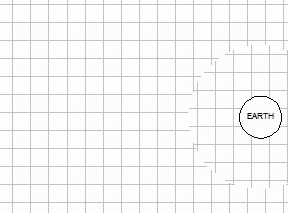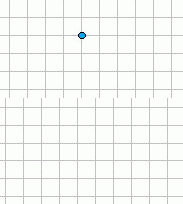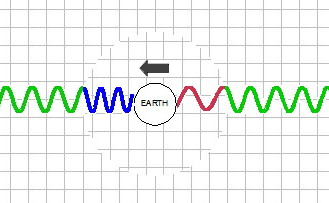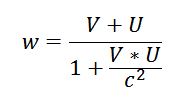:: Home
:: Sections :: Experiments
:: Blog :: Contact
::
This page posted on April 21, 2018, updated Jan 18, 2019
This page posted on April 21, 2018, updated Jan 18, 2019
The Aberration of light and Doppler
effects
First discovered in the
late 1600s, the aberration of light has played an important
role on the various theories of propagation of light.
The aberration of light effect is illustrated in the animation
under section “muon’s view of the universe”. The short
description is that, for moving observers, sources of light
appear to change their observable position in the direction of
the observer’s motion. This effect is observable from
Earth, stars seem to move as Earth orbits around the
sun. The effect is consistent with the known (or
calculated) orbital speed of Earth. While the
Michelson-Morley experiment did not yield positive results for
the motion of Earth around the sun, the aberration of light
measurement and the Doppler effect on light from stars clearly
indicates that Earth is
moving. This section is an attempt to offer an
explanation of these two results.
For Simple Model Gravitation (SM), Earth’s gravitational field pulls on space in our near vicinity (where Earth’s gravitational field is dominant). Falling space causes ‘gravitational’ time dilations (special relativity effects due to the speed of falling space) and accelerates all objects toward Earth (and therefore we are bound to Earth’s surface). Far from Earth, where the Sun’s gravitational field is dominant, space falls towards the sun. Earth moves around the sun in a gravitational bubble as shown in the animation below. The sun is located at the bottom of the animation and the effect of falling space is not shown.


For sources of light directly in front or directly behind Earth’s orbital path, the effect is a Doppler effect, but what about the speed of the incident light? The actual effect is illustrated in the figure below, where Earth is moving from right to left as indicated by the arrow.

The figure above illustrates two green beams of light falling on Earth. In each case, the light is blue-shifted (as it meets oncoming Earth) or red-shifted (as it catches up to Earth). The effect shown above is highly exaggerated for illustration purposes; but in either case, the speed of light reaching observers on the surface is still the speed of light c. The effect is the same that would be experienced by passengers on a moving train as they perceive a blaring horn on the ground near the tracks. If all the windows are closed, the speed of sound inside that train is the same from front to back as it is from back to front regardless of the speed of the train. The train passengers would still perceive the Doppler effect as the train moves towards or away from the horn. Another team, in a train with a different velocity on an adjacent track, trying to measure the speed of sound inside the train (with its windows also closed) will obtain results similar to the first train. Both teams may come to the conclusion that “the speed of sound is constant for all observers regardless of the speed of the train”, due to the fact that the medium for the sound waves (the air inside the train) is traveling with the train.
The red-shifting effect illustrated above is the generally accepted explanation for the red-shifting of light coming from distant galaxies moving away from us. The effect is gain (for blue-shift) or loss (for red-shift) of energy of the photons as they undergo a change of wavelength; this is because the energy of a photon in inversely proportional to its wavelength.
Let’s consider the effect for particles of matter falling towards Earth. What would be the effect on the speed of the particle as it enters Earth’s gravitational bubble? The effect is similar to the effect on light, particles gain energy as the fall to an oncoming Earth and lose energy as they catch up to Earth. This has been recently demonstrated by a study on Cosmic Ray energies between early morning and evening hours. The study can be viewed by clicking here.
Relativity offers a formula for calculating the relative speed between two objects. See the formula below:
 This formula does not account for the energy of the
objects; and rather ignores it. This is a mistake. If
this formula were used to determine the speed of Cosmic Rays
in the evening, their numbers and energies would severely
drop; this is not happening as the study above shows.
This formula does not account for the energy of the
objects; and rather ignores it. This is a mistake. If
this formula were used to determine the speed of Cosmic Rays
in the evening, their numbers and energies would severely
drop; this is not happening as the study above shows.
To see why energies are important, consider this: let’s say for instance, that from Earth we observe a rocket moving at a relativistic speed. If we were to calculate the total kinetic energy of the Universe, we add up the energy of all the objects in the Universe and include the rocket moving at relativistic speed. Mass gains due to speed have to be included.
On the other hand; let’s calculate the total kinetic energy of the universe from the rocket’s point of view. The rocket makes the assumption that it is not moving; and that the rest of the Universe is moving at a relativistic speed. The resulting total energy would be very different than the calculation for the Earth’s observer. In fact, every observer in the universe would calculate a different value for the total energy of the Universe. This cannot be; different total kinetic energy values will necessarily yield different outcomes for the Universe; that is, the Universe will evolve different for each observer. This is certainly not the case. There is only one universe; and only one outcome (regardless of whether we know it or not). This tells us that the total energy of the universe is unique (at a given time) and not relative to each observer.
For Simple Model Gravitation (SM), Earth’s gravitational field pulls on space in our near vicinity (where Earth’s gravitational field is dominant). Falling space causes ‘gravitational’ time dilations (special relativity effects due to the speed of falling space) and accelerates all objects toward Earth (and therefore we are bound to Earth’s surface). Far from Earth, where the Sun’s gravitational field is dominant, space falls towards the sun. Earth moves around the sun in a gravitational bubble as shown in the animation below. The sun is located at the bottom of the animation and the effect of falling space is not shown.

Light from a far away source,
falling on an Earth observer, would be bent as shown
below. Note that the actual nature of the boundary
between Earth’s space and the sun’s space is still TBD,
but the effect would still be the same.

Observers within Earth’s frame of reference would receive a photon that is moving at the speed of light c. François Arago, Airy and others performed observations with water filled telescopes, expecting that light would strike the telescope at an angle and also because photons travel slower in water it was expected that the apparent position of the source would change even more. These experiments determined that the aberration was unaffected by the medium in the telescope; and as the illustration above would indicate, the angle of incidence on a telescope for an Earth observer would be perpendicular to the medium and, therefore, the refraction index of the medium is irrelevant.
For sources of light directly in front or directly behind Earth’s orbital path, the effect is a Doppler effect, but what about the speed of the incident light? The actual effect is illustrated in the figure below, where Earth is moving from right to left as indicated by the arrow.

The figure above illustrates two green beams of light falling on Earth. In each case, the light is blue-shifted (as it meets oncoming Earth) or red-shifted (as it catches up to Earth). The effect shown above is highly exaggerated for illustration purposes; but in either case, the speed of light reaching observers on the surface is still the speed of light c. The effect is the same that would be experienced by passengers on a moving train as they perceive a blaring horn on the ground near the tracks. If all the windows are closed, the speed of sound inside that train is the same from front to back as it is from back to front regardless of the speed of the train. The train passengers would still perceive the Doppler effect as the train moves towards or away from the horn. Another team, in a train with a different velocity on an adjacent track, trying to measure the speed of sound inside the train (with its windows also closed) will obtain results similar to the first train. Both teams may come to the conclusion that “the speed of sound is constant for all observers regardless of the speed of the train”, due to the fact that the medium for the sound waves (the air inside the train) is traveling with the train.
The red-shifting effect illustrated above is the generally accepted explanation for the red-shifting of light coming from distant galaxies moving away from us. The effect is gain (for blue-shift) or loss (for red-shift) of energy of the photons as they undergo a change of wavelength; this is because the energy of a photon in inversely proportional to its wavelength.
Let’s consider the effect for particles of matter falling towards Earth. What would be the effect on the speed of the particle as it enters Earth’s gravitational bubble? The effect is similar to the effect on light, particles gain energy as the fall to an oncoming Earth and lose energy as they catch up to Earth. This has been recently demonstrated by a study on Cosmic Ray energies between early morning and evening hours. The study can be viewed by clicking here.
Relativity offers a formula for calculating the relative speed between two objects. See the formula below:
To see why energies are important, consider this: let’s say for instance, that from Earth we observe a rocket moving at a relativistic speed. If we were to calculate the total kinetic energy of the Universe, we add up the energy of all the objects in the Universe and include the rocket moving at relativistic speed. Mass gains due to speed have to be included.
On the other hand; let’s calculate the total kinetic energy of the universe from the rocket’s point of view. The rocket makes the assumption that it is not moving; and that the rest of the Universe is moving at a relativistic speed. The resulting total energy would be very different than the calculation for the Earth’s observer. In fact, every observer in the universe would calculate a different value for the total energy of the Universe. This cannot be; different total kinetic energy values will necessarily yield different outcomes for the Universe; that is, the Universe will evolve different for each observer. This is certainly not the case. There is only one universe; and only one outcome (regardless of whether we know it or not). This tells us that the total energy of the universe is unique (at a given time) and not relative to each observer.